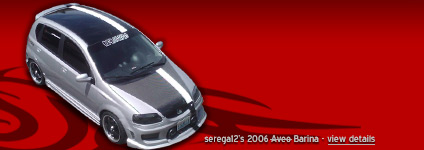About two months ago I happened across this forum while looking for some information on swapping the clutch on my '05 hatchback. I have just shy of 400k miles on this thing, and the clutch had been slipping since about 250k-300k. My wife and I were about to go to the Smoky Mountains for vacation, so I figured it was about time to get the job done so I didn't get stuck on a hill somewhere. Anyway, I found some good information, but I didn't see much in the way of a compiled "This is how I did it" anywhere on the internet. So, this is my contribution.
Edit: Incidentally, I have the D16 manual transaxle. The manual also shows that there's a cable-shift Y4M transaxle as well.
I'll split this into several consecutive posts, each representing what I thought was a significant step. It'll probably take a few days to get all this organized and stuff, but I'll try not to dawdle. Everything I say is, of course, just how I did it. I'd do some things differently, and I'll definitely mention these things when I get there. If someone else wants to recommend things, please do. I've read that one of you guys can do this in a few hours without pulling the driveshafts. That's incredible, and I'd pay money to see that happen, but I'm definitely not that good. This took me four evenings, about 2-3 hours each night. It shouldn't have taken nearly so long, but it was dark, and I get distracted easily. Oh, look! A squirrel!
I don't think this is something unreasonable to do in your driveway. It was a PITA here and there, but I've dealt with a lot worse. I'm a pretty avid driveway mechanic, but I've never done a transaxle. I have done large transmissions on large vehicles, but this was a new adventure. I did the entire job myself minus about 10 minutes of lifting and moral support from my wife.
Here are some thoughts before you start.
First, you'll have to get a clutch. I got mine from NAPA. It was the NAPA branded kit, which is actually the LUK kit that you can find on the internet. It came with a throwout bearing, clutch plate, pressure plate, some grease, and an alignment tool. It was about $50 more than I could have gotten it for online, but I made the decision to make the plunge about one week before my trip, and I couldn't wait for shipping. Plus, I really like the guys at my local NAPA. One REALLY significant issue was that the alignment tool wasn't the right one. They apologized and promised to take care of it, but I was on a time crunch and couldn't afford to wait. More on that later. So far, the LUK kit is working fine.
Second, I found the GM service manual to be quite helpful. I'm not sure I would have known exactly how many, and which, bolts to pull if I didn't have it. Plus I've heard that torque specs are kind of important when it comes to stuff like this. I wouldn't want a pressure plate retaining bolt coming undone 20k miles after doing all this work. It's definitely not necessary, but it was definitely helpful. I'm sure a Chilton's or Haynes would be similarly helpful, but I don't know if those exist for Aveos.
Third, if you're doing this work, consider replacing some other parts. Number one for me was the rear crankshaft seal. I bought it in advance, and as it turns out mine wasn't hardly leaking at all. It's leaking everywhere else, as you'll soon see, but it was a barely-noticeable leak at the rear main seal. I replaced it anyway; it's definitely not going to be getting any better, and you have to pull the transmission to get at it. It's something like $15.
You'll also have VERY easy access to the seals around the driveshafts when you have the transmission removed, and you'll also have the shift linkage removed. Both of those parts wear out. I knew my shift linkage was sloppy, but I was dumb and forgot to order parts to rebuild it (not even sure that's possible) or replace it. I just left the axle seals alone because I'm going to have to pull the driveshafts next spring to do some suspension work.
One other consideration: It was really hard for me to find two quarts of whatever the manual gear lube was. I don't remember offhand exactly what the stuff was, but it's definitely something you'll want to source and order ahead of time. Regular parts stores around here don't carry it. It's a good thing I had my truck; one local dealer had one quart, and the other had none. I had to drive into the next town to get the second quart to finish the job.
EDIT: It was SAE75W-85 GL-4 manual transaxle fluid. The bottles I got from GM weren't labeled as such, but they were what came up in the parts counter computer. I just had to trust them.
If you want larger copies of the images, let me know. I saved the originals.



 LinkBack URL
LinkBack URL About LinkBacks
About LinkBacks


 Reply With Quote
Reply With Quote